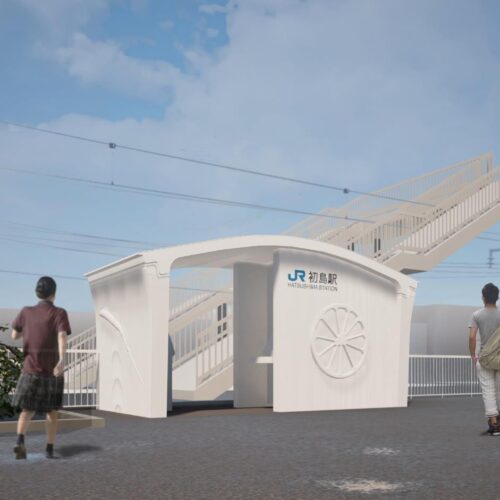I tried Anthony Bourdain's favorite egg sandwich, which cost $2 from a Japanese convenience store. I wish the US had such tasty, cheap options.

Jenny McGrath/Business Insider
- Egg sandwiches are sold in Japan's many convenience stores.
- Anthony Bourdain said he particularly loved the version from Lawson, a convenience store.
- For $2, the chain makes the perfect grab-and-go option for breakfast or lunch.
If the idea of a convenience store sandwich conjures up visions of stale bread and a mysterious filling that may not pass the sniff test, think again. Anthony Bourdain called egg sandwiches found at Japan's convenience stores "pillows of love."
On a recent trip to Japan, I too fell in love with egg salad sandwiches and wanted to try a grab-and-go version from one of the country's ubiquitous convenience stores. The sandwiches are quick, tasty, and the perfect thing to eat when you're in a hurry.
In the Okinawa episode of "Parts Unknown," which aired in 2015, Bourdain described this snack as having an unholy grip on him. Bourdain swore by Lawson's version in particular.
Lawson, a chain of convenience stores, sells packaged egg sandwiches, or tamago sandos, for around $2.
Before heading to the airport on my last day in Japan, I stopped in for one. For the price and speed, it was hard to top.

Issei Kato/Reuters
Oysters in Hiroshima. Kaiseki meals in Kyoto. Egg salad from a convenience store?
During my research, tamago sandos popped up again and again. They're sold in restaurants, vending machines, and convenience stores, or konbini.
Dutch and Portuguese traders introduced bread to Japan in the 16th century, and Western-influenced sandwiches became more popular during the Meiji Era in the late 19th century, per Tasting Table. Japanese chefs soon adapted sandwiches to add their own culinary style, flavors, and techniques.

Jenny McGrath/Business Insider
Lawson started in Ohio in 1939 and opened stores in Japan beginning in 1975. Only two stores remain in the US, both in Hawaii.
Sandwiches from both 7-Eleven and Lawson have their fans, and you can find dupe recipes from Food & Wine, Tasting Table, and more.
Paradise. Utopia. These are the words people use to describe the bounty to be found in 7-Eleven, Lawson, and FamilyMart, the three major convenience store chains in Japan. Estimates put the number of konbini at around 56,000, The Guardian reported in 2024.
They offer a huge variety of items, from underwear to face masks to alcohol. It's the wealth of fresh, prepared foods that sets them apart from their US counterparts.

Jenny McGrath/Business Insider
There were plenty of potato salad options left, though. Tuna and egg and ham and egg options were also available.
My sandwich expired two days after I bought it, at 11 p.m., according to its label.

Jenny McGrath/Business Insider
Fluffy and lightly flavored, milk bread, or shokupan, adds a touch of sweetness. Bon Appétit compared its softness to white bread but with more fat. The sandwiches are crustless, cut into perfect squishy triangles.
Those trying to replicate the sandwich in the US typically use Kewpie mayo. The Japanese brand uses an extra egg yolk, several types of vinegar, and MSG, per Tasting Table. The result is a creamy, rich sauce that's a little different from other types of mayo, though the US version doesn't contain MSG.

Jenny McGrath/Business Insider
There was no shortage of canned coffees and other beverages available in to-go cups. The latter came with straws to pierce through the foil tops.
After buying my items, I tasted the sandwich. The bread was soft and springy, while the filling was rich with a touch of tanginess.
When I got back to the US, I checked out the sandwich options in my local 7-Eleven. There was a small cooler with a few options, including an egg salad. It cost $5.29, more than double what I paid in Tokyo. Since its "best by" date was the same day, I decided to skip trying it.

Jenny McGrath/Business Insider
In Kyoto, I usually spent breakfast at sit-down restaurants that invariably had incredible, creamy egg sandwiches and perfectly brewed coffee. I was able to enjoy a leisurely meal while planning out my agenda for a day of sightseeing.
When you're late for work or rushing to the airport, though, stores like 7-Eleven and Lawson can't be beat for a speedy, inexpensive option.








